
This is a video that gives a basic overview of fractions and how the parts make a whole.
Video is made through mathantics.com
- Subject:
- Mathematics
- Material Type:
- Activity/Lab
- Author:
- mathantics.com
- Date Added:
- 04/04/2021

This is a video that gives a basic overview of fractions and how the parts make a whole.
Video is made through mathantics.com
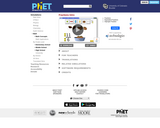
Explore fractions while you help yourself to 1/3 of a chocolate cake and wash it down with 1/2 a glass of orange juice! Create your own fractions using fun interactive objects. Match shapes and numbers to earn stars in the fractions games. Challenge yourself on any level you like. Try to collect lots of stars!
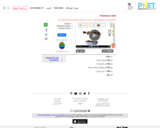
Explore fractions while you help yourself to 1/3 of a chocolate cake and wash it down with 1/2 a glass of orange juice! Create your own fractions using fun interactive objects. Match shapes and numbers to earn stars in the fractions games. Challenge yourself on any level you like. Try to collect lots of stars!
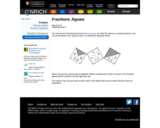
This problem provides students an opportunity to find equivalent fractions and carry out some simple additions and subtractions of fractions in a context that may challenge and motivate students. Users need to download, print, and cut-out the fraction jigsaw. Then, they must arrange the square pieces right-side up so that the edges that touch contain equivalent fractions. The Teachers' Notes page offers rationale, suggestions for implementation, discussion questions, and ideas for extension and support.
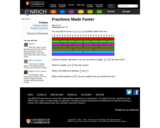
In this problem students use a visual representation of fractions to compare fractions. Students are given two fractions and using the fraction wall they must compare them and find the difference between them. A Teacher's Notes page, hints, solutions, and printable pages are provided. The goal of this problem is for students to compare the two fractions given by using the visual fraction wall or their knowledge of equivalent fractions and subtracting fractions.
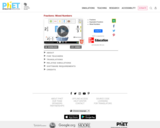
Explore fractions while you help yourself to 1 and 1/2 chocolate cakes and wash it down with 1/3 a glass of water! Create your own fractions using fun interactive objects. Match shapes and numbers to earn stars in the mixed number game. Challenge yourself on any level you like. Try to collect lots of stars!

Welcome to a Fractions Review with Mr. J (Spanish version)! Need a refresher on how to add fractions, subtract fractions, multiply fractions, and/or divide fractions? Everyone needs a refresher from time to time, so this video is for you if you're looking for help with fractions. Mr. J will go through examples of adding fractions (like and unlike denominators), subtracting fractions (like and unlike denominators), multiplying fractions, and dividing fractions.
About Math with Mr. J: This channel offers instructional videos that are directly aligned with math standards. Teachers, parents/guardians, and students from around the world have used this channel to help with math content in many different ways. All material is absolutely free.
Mr. J is very good at walking you step by step to teach you upper grade math, 5-6 grade math. I like using his videos to teach my students in class. I can pause it and have them use their white boards to practice with Mr. J to understand how to do the lesson step by step.

In this lesson designed for elementary grades 4-6, students explore dance elements by learning about math fractions.

The focus of the Fractions and Their Parts intervention is understanding fractions as equal parts, their written form, and the terms numerator and denominator. It has two phases. Phase 1 uses paper folding. Phase 2 uses drawing and introduces the vocabulary terms..
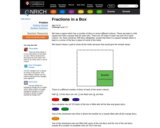
This problem gives students practice in calculating with fractions, using factors and multiples, finding equivalent fractions, logical reasoning, and working systematically. Students use clues to determine the total number of discs in a game and the fraction represented by each color. The Teachers' Notes page offers rationale, suggestions for implementation, discussion questions, ideas for extension and support, and a printable (pdf) worksheet of the problem.
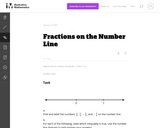
This task requires students to place fractions onto a number line.

The Fractured Fairy Tale tool encourages students to create their own fractured fairy tales.

Students will learn the elements of a Fairy Tale. Students will learn what a fractured fairy tale is. Students will write their own version of a fractured fairy tale. Students will then make a storyboard, script, and video of the fractioned fairy tale they wrote.Red Hen, Photo by Ellie Burgin: https://www.pexels.com/photo/portrait-of-yellow-hen-12513114/, Photo is free to use.

Reading: Literature Standard 6Acknowledge differences in the points of view of characters, including by speaking in a different voice for each character when reading dialogue aloud.Students will practice point of view by changing the characters and setting in the original story of The Three Little Pigs.

Our planet is constantly changing; explore how it has changed over the last 30 years using Google Earth's timelapse feature.
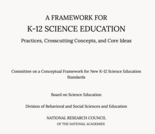
A teacher friendly research document that explains the three dimensions of science including science and engineering practices, crosscutting concepts, and disciplinary core ideas. Each dimension as well as their specific progressions from grades K to 12 is explained in depth within its own chapter. The disciplinary core ideas are grouped into major disciplines (i.e., Physical Sciences; Life Sciences; Earth and Space Sciences; Engineering, Technology, and Applications of Science). Each discipline is explained in a separate chapter. The report also describes developmentally appropriate learning progressions. Additionally there are chapters on important topics such as integrating the three dimensions (Ch.9), Implementation into the classroom (Ch.10), Equity and Diversity (Ch.11).

A teacher friendly research document that explains the three dimensions of science including science and engineering practices, crosscutting concepts, and disciplinary core ideas. Each dimension is explained in depth within its own chapter. The disciplinary core ideas are grouped into major disciplines (i.e., Physical Sciences; Life Sciences; Earth and Space Sciences; Engineering, Technology, and Applications of Science). Each discipline is explained in a separate chapter. The report also describes developmentally appropriate learning progressions.
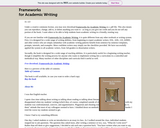
Written by Steve Poulter, it presents a different way of teaching writing to students. The method is “writing with the teacher present” or simply students doing ALL their writing in class. This way of teaching writing is more like athletic practice than class. Students practice writing while the coach (professor or instructor) was around to break steps down into smaller and smaller elements and to help them learn the skills “in real time.
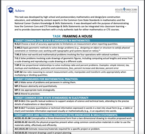
This task has students recreate house plans on graph paper and then determine how many linear feet of wall plate material will be needed

This lesson is created and intended for a Photography 1 classroom at the 10-12 grade level. This lesson teaches students about composition techniques to help improve their photographic compositions. Before teaching this lesson, you may want to review other easier composition techniques with your students (ie. Rule of Thirds, Angle of View, and Filling the Frame). This lesson is interactive, using Nearpod Presentations to teach the main concept. This lesson can be used in an entirely virtual classroom, or an in- person clasroom! It is flexible & fun for all types of learning!